Enriching lives through beauty, education, and the arts.
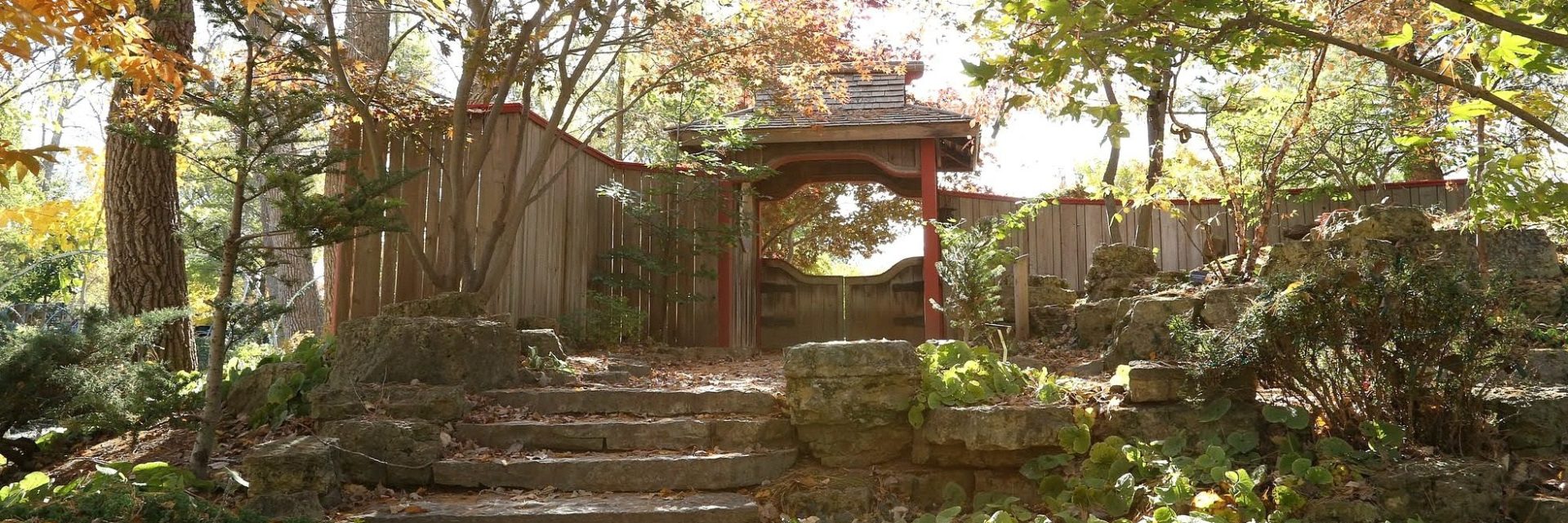
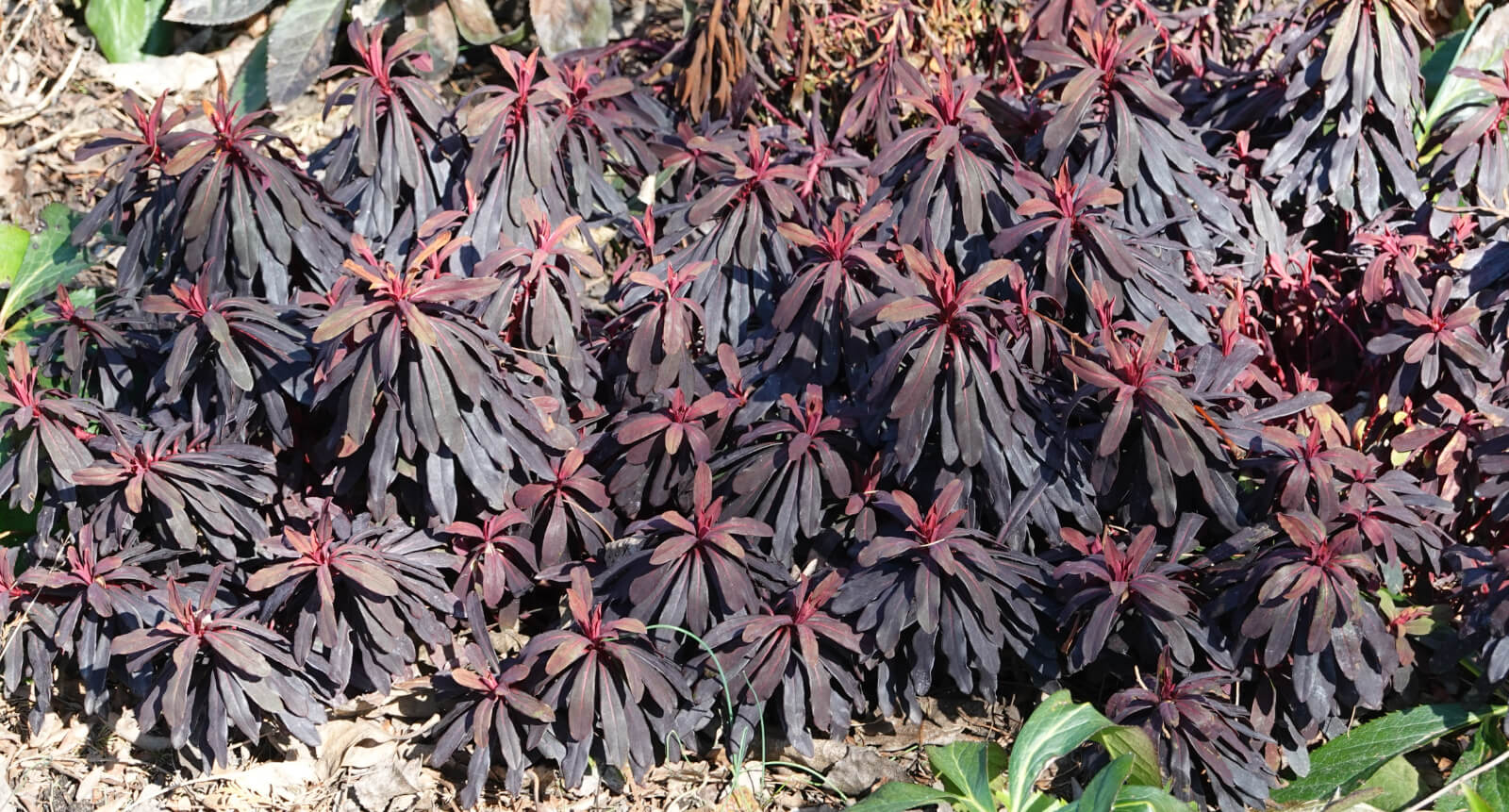
What a whirlwind 2024 has already been …
With unusual warmth in February and March, the garden was awakened earlier than ever. Winter aconite, hellebores, and even some of the earliest daffodils flowered in February, at one-point blooms were about 3 weeks ahead of schedule from where we typically are accustomed to.
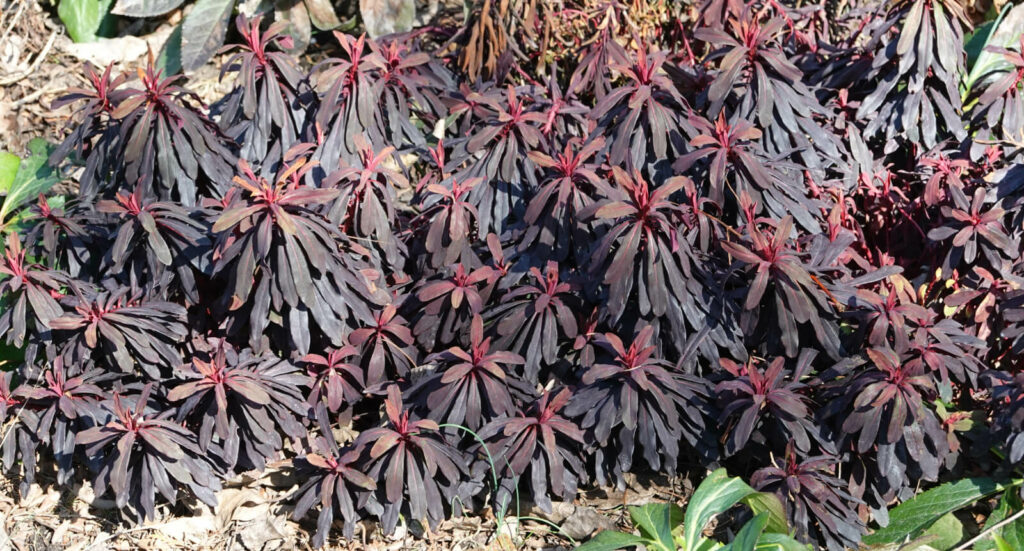
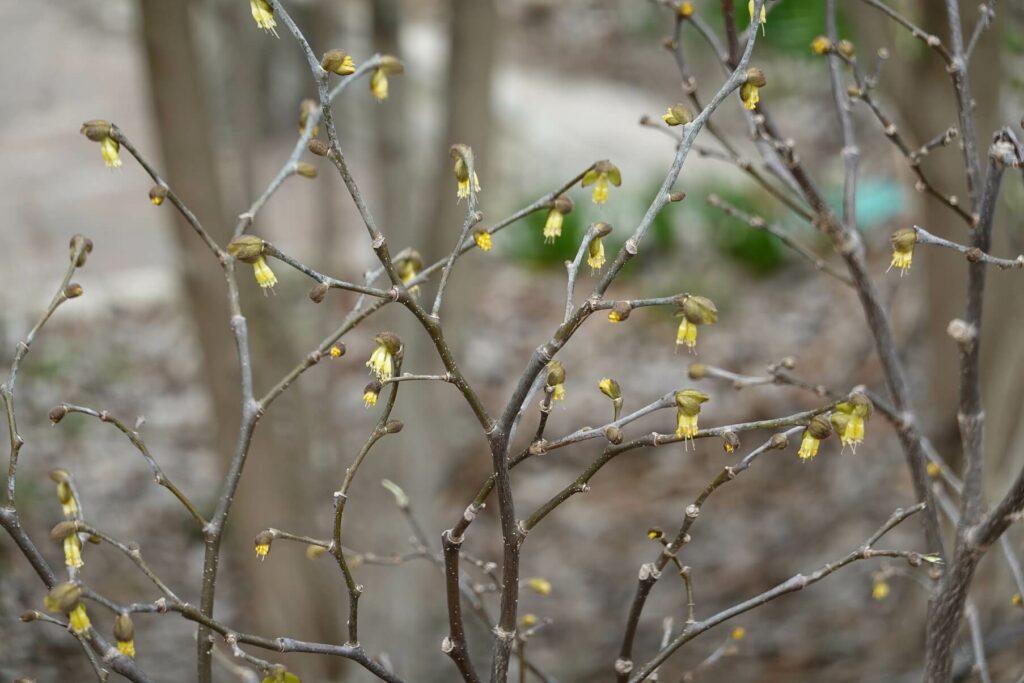
Cooler temperatures in late March and early April have slowed our record pace this spring, but that isn’t a bad thing. We saw flower buds on Magnolia trees start to swell to the point where they were nearly ready to open; luckily none of ours did, so they remained unscathed and ready to flower with profusion in the next week or two.
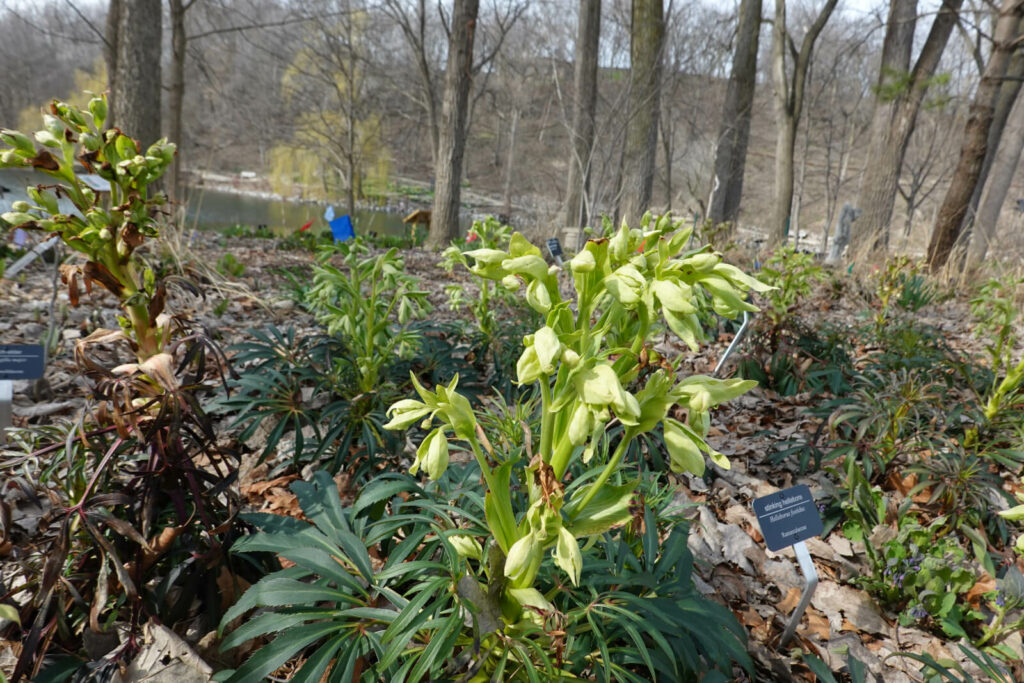
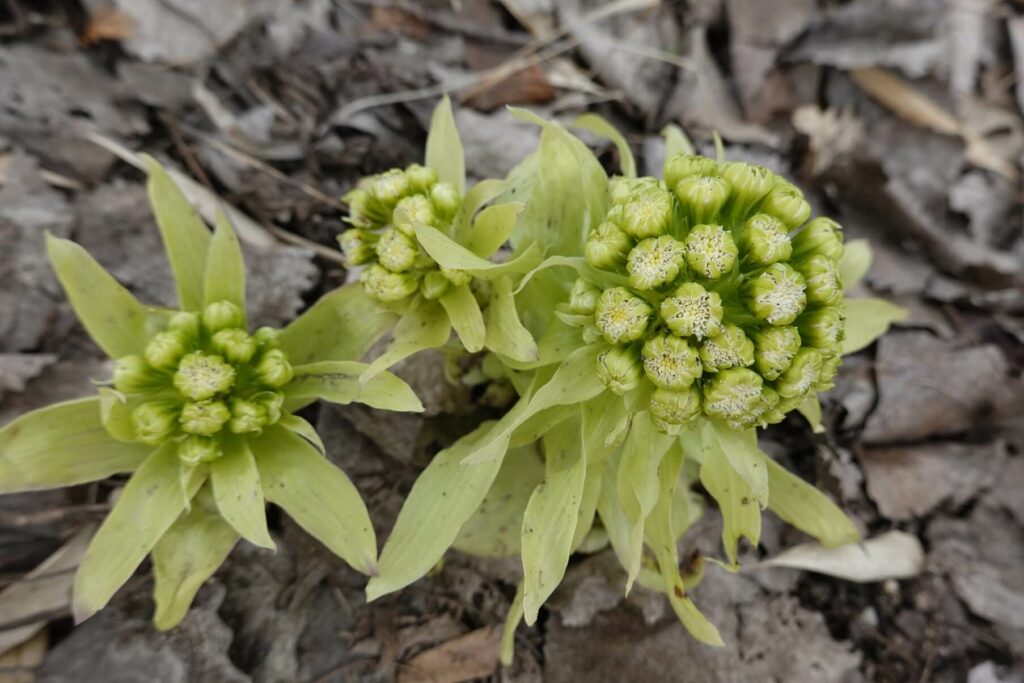

From the hundreds of thousands of bulbs, to all our flowering trees, shrubs, and perennials, the garden is set to tantalize the senses with a bevy of color and fragrance this spring. This might just be my favorite time of year because we have so much interest to look forward to in the garden.
Spring has definitely sprung at Rotary Botanical Gardens!
See you in the garden.
Michael Jesiolowski – Director of Horticulture

We’re thrilled to announce our new mural is officially complete!

In support of our mission to Enrich Lives Through Natural Beauty, Education, and the Arts, we enlisted the talented local artist, Emily Balsley, to create a whimsical mural inside the Gardens’ new Comfort Station.
This colorful addition welcomes visitors as they enter the Comfort Station and covers a good portion of the hallway leading to the restrooms. The design features larger-than-life flowers that can be found in the Gardens, such as alliums, bee balm, coneflowers, and salvia.
It also showcases some of our local wildlife including monarch and swallowtail butterflies, rusty patch bees, a hummingbird, and an oriole. Check out the photos below for a preview of this beautiful mural!
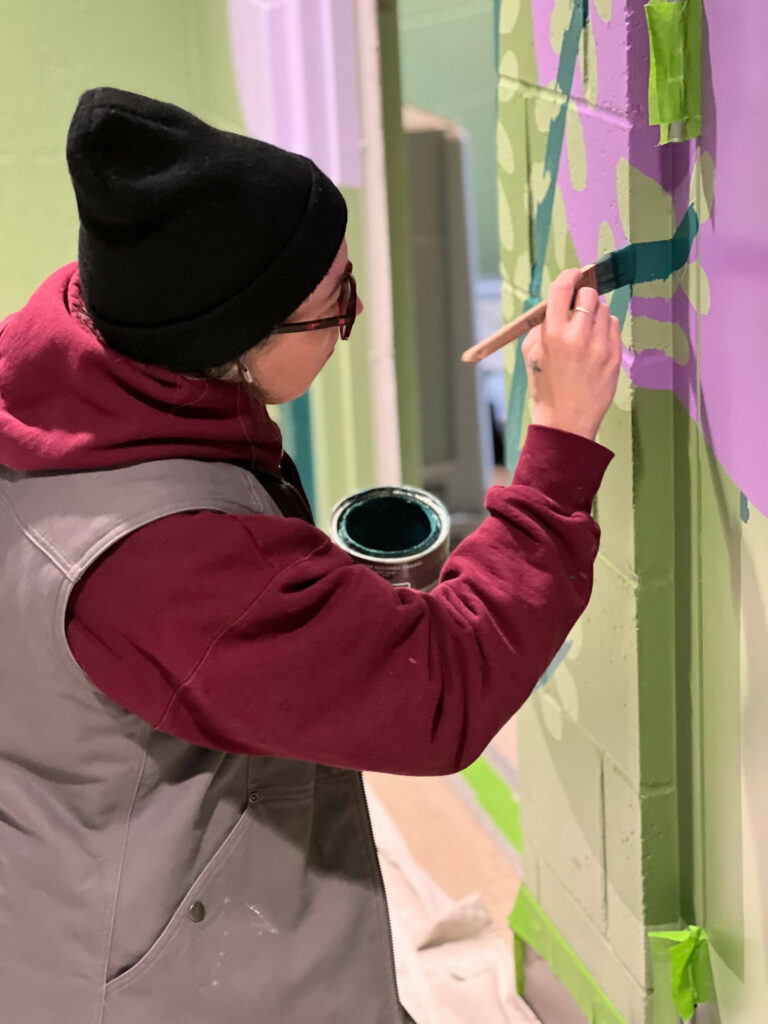


About the artist
Emily Balsley is an illustrator & muralist based out of Madison, WI. She is an active member of the creative community and has completed various creative projects throughout Wisconsin, including murals located at Unity Point Meriter, Stoughton Public Library, Milton Public Library, and outside St. Mary’s School in Janesville.
A special thank you to Emily for sharing her artistic talents with us, and for all of the hard work she put into this piece. We would also like to thank Marsha Mood for documenting the progress of this mural over the last few weeks.
We can’t wait for you to visit us and see for yourself!

Our 27th annual Holiday Light Show marked a record year, thanks to you, the incredible 60,000 people who immersed themselves in the glow of 1.5 million lights.
Whether you joined us for Premier Night with 550 of our fellow Friends of the Garden Members and their loved ones, attended one of the 10 corporate parties celebrating under the lights, or made memories during one of the 27 show nights, your presence made each night special. We are so happy to have made it through the month without a single weather-related cancellation!

While many of us think of the Holiday Light Show as a winter celebration, it’s worth noting that behind the scenes, Larry Holterman, our Gardens’ longstanding “light artist,” started the monumental task of stringing lights this year on August 7, with so many other skilled staff and volunteers making the long set up a labor of love.
90% of this years 1.5 million lights were energy-efficient LEDs, “icicle” lights reached heights equivalent to scaling Mount Everest TWICE, and the Gardens dazzled with 160 lit arches and 2,475 luminaries made from recycled milk cartons.
To power this year’s display, we utilized 11.5 miles of extension cords – enough to stretch from Rotary Botanical Gardens to Beloit! The meticulous process of connecting cords, lasting three weeks, ensured the prevention of tripped circuits or damaged cords.
A resounding thank you and shout out to the 83 invaluable volunteers who contributed 1,456 hours (not including set up and take down!) helping the show run smoothly and creating a warm, welcoming atmosphere. Your dedication and passion truly illuminated the Gardens.

The new Comfort Station for concessions and restrooms was a hit as we served 1,148 gallons of hot cocoa, and you all devoured over 5,047 holiday cookies – talk about embracing the festive spirit!
The media took notice, with news and radio features, blogs, travel articles, vlogs, and even a nomination for the 2024 “Christmas Light Fight”! Your enthusiasm and the magic you created at the Gardens resonated far and wide.
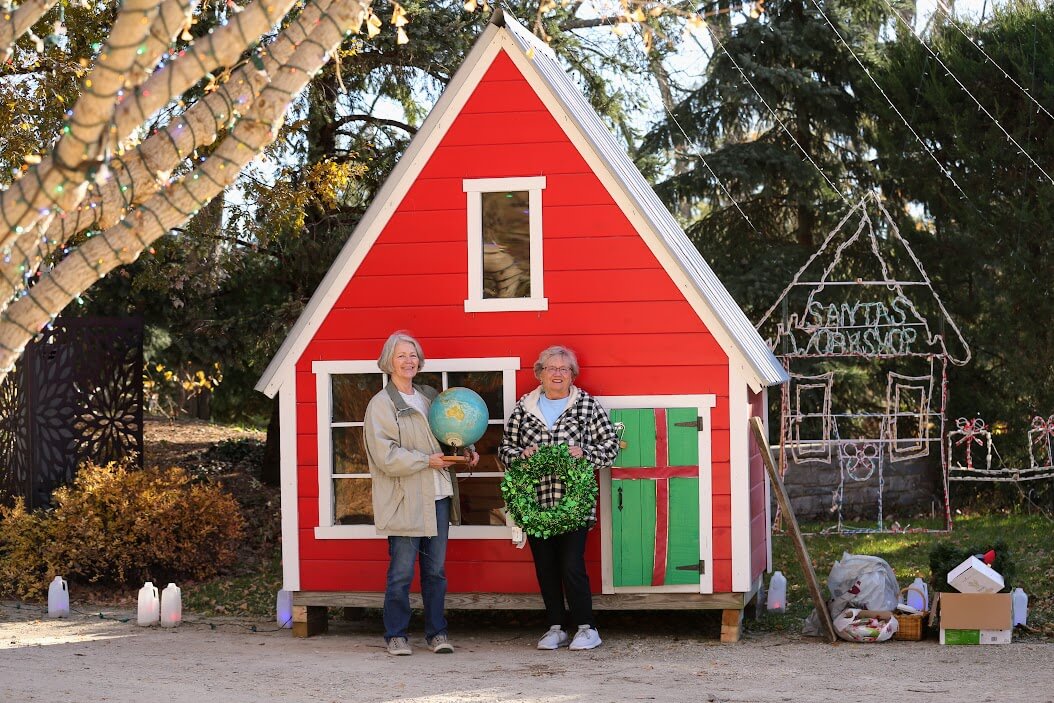
A heartfelt thank you to our generous event sponsors who played a crucial role in making this magical experience possible. Your support allowed us to spread joy and create unforgettable moments for our community.
The successful 2023 Holiday Light Show, a record-breaking year and the Gardens’ largest feature fundraiser for our year-round mission, means we can continue serving our community by enriching lives through natural beauty, education, and the arts.

As we embark on the task of dismantling the show, our gaze shifts to the upcoming growing season at the Gardens. Anticipating the welcome of 150,000 visitors throughout Spring, Summer, and Fall, we are gearing up for a range of offerings, including award-winning horticultural displays, diverse education programs for youth and adults, music, art and movement classes, workshops, and engaging talks.
Thank you again, for enjoying the Holiday Light Show with us. We love that we get to be a part of holiday traditions for so many. Here’s to more magical moments in the seasons to come!

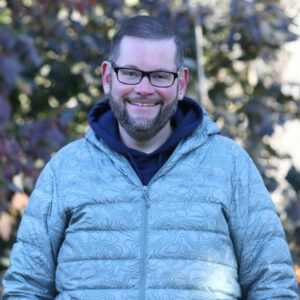
Greetings! My name is Alan and I am really excited to be joining the team here at Rotary Gardens in beautiful Wisconsin. I’m a native Pennsylvanian, who for the past decade has resided in the Pacific Northwest in Everett, Washington. It was there that I started my studies and career in horticulture.
Having previously completed a degree in German, I returned to school in 2019 to obtain a degree in Horticulture with a specialization in Nursery and Greenhouse Management. Upon graduating I landed an internship at the Elisabeth C. Miller Botanical Garden in Seattle, Washington. Here I gained experience using proper horticultural practices to care for an incredibly diverse set of plantings. I also did extensive work propagating and caring for plants in the garden’s nursery.
This experience was followed by a stint at the Morton Arboretum in Lisle, Illinois, where I worked as a Plant Records Assistant. My role here had me taking inventory of various plant collections, assisting with the maintenance of the collections database, as well as the production of plant labels and garden signage. Other experience includes working for several retail nurseries and serving as a board member for the Evergreen Arboretum and Garden.
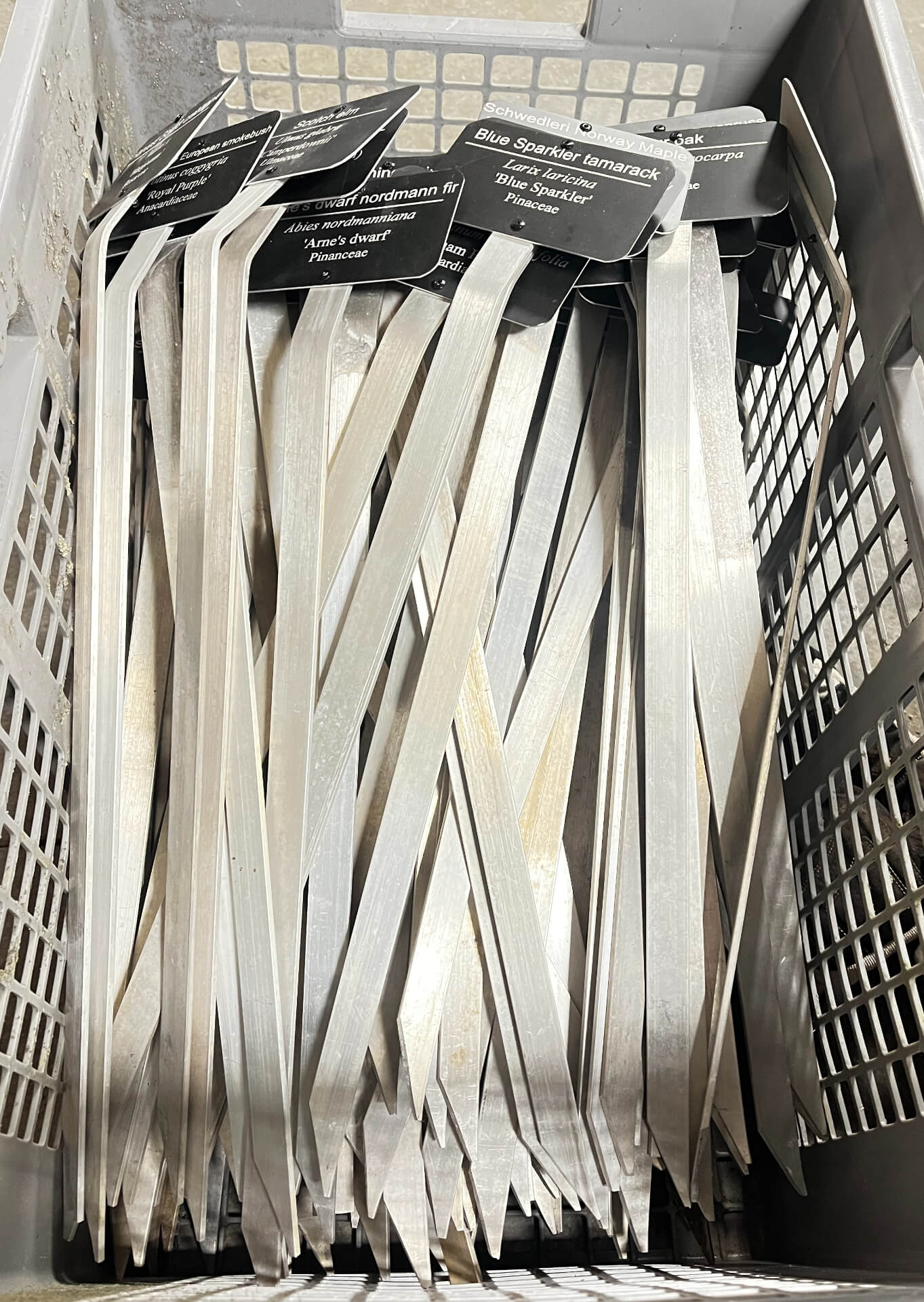
Since starting here at the garden this past November, I have been putting my prior experience with labeling plants to good use. I have identified and produced labels for many of the trees and shrubs in the garden (250 and counting). I am looking forward to getting these installed this spring and after finishing up with the trees and shrubs moving on to identifying and labeling all the perennials. This will hopefully help to enhance the experience for visitors in the garden.
It should be no surprise given my role at the garden that I am very passionate about plants. I have amassed quite a large personal collection of plants that many people might find a bit mad. I will confess to be little concerned myself when nearly half of the U-Haul I rented to relocate here was filled with plants. Everyone and everything made it just fine, so I guess I’m not yet at a point of “having a problem.”

One question that I am often asked that I find impossible to answer is, “what is your favorite plant?” The closest thing to an answer that I can give would be to say that I like a lot of ericaceous plants, meaning plants found in the Health family (Ericaceae). This includes plants such as Rhododendrons, Enkianthus, and Kalmias (mountain laurels). I am looking forward to working with Michael to bring some of the hardier varieties of these plants to the garden.
One of my favorite plants that I have encountered as I have been working in the Gardens is the Japanese Stewartia (Stewartia pseudocamellia) found inside the south entrance to the Japanese garden. With white camellia-like flowers appearing in spring, attractive foliage shades of reddish-orange and burgundy in autumn, and a horizontal branching structure and smooth cinnamon mottled bark, this small-to medium-sized tree is truly a spectacle and adds four seasons of interest to any garden.
In Southern Wisconsin (5b) Stewartias are best situated in an area that provides them with afternoon shade in the summer and shelter from winter winds.

While I have met some of the many amazing volunteers here at the Gardens, I know that there are many more of you who I have not yet met, and I am looking forward to working with all of you this coming season.
See you in the Gardens,
Alan
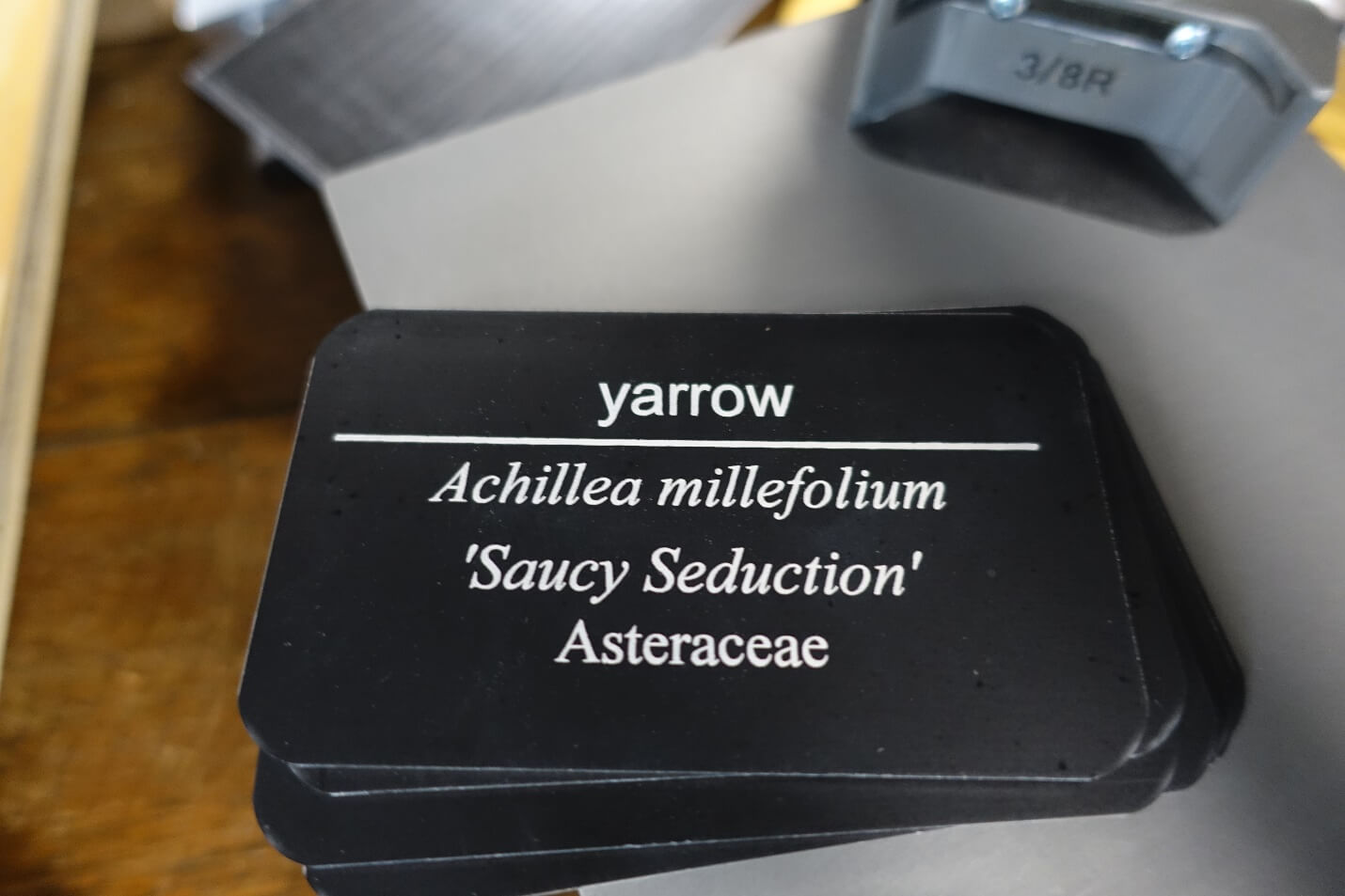
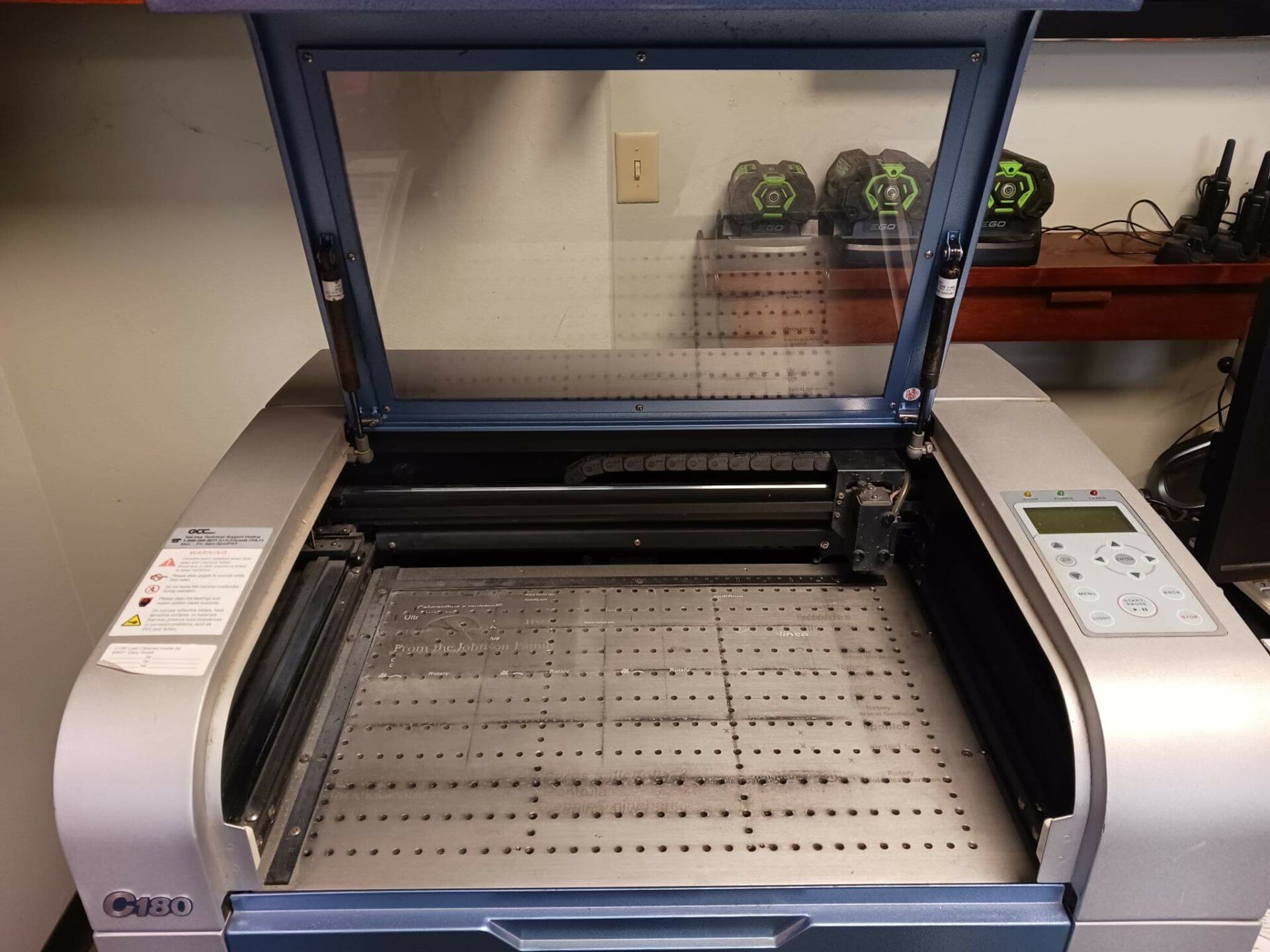
To call everything by its right name …
This has long been the goal of the garden, but it has been difficult to put in practice.
Over the past few years, we have added thousands of new plants, but have had not been successful in labeling them. This has been a source of frustration for visitors, as they come across a plant of interest, but are unable to readily identify it.
The garden has had a laser engraver on site for over a decade, to make plant labels and other interpretive signage, but it has been in a state of disrepair for several years. Many attempts of fixing it by updating drivers, adding a new USB port, and tech support with the manufacturer have been tried, but never with lasting success.
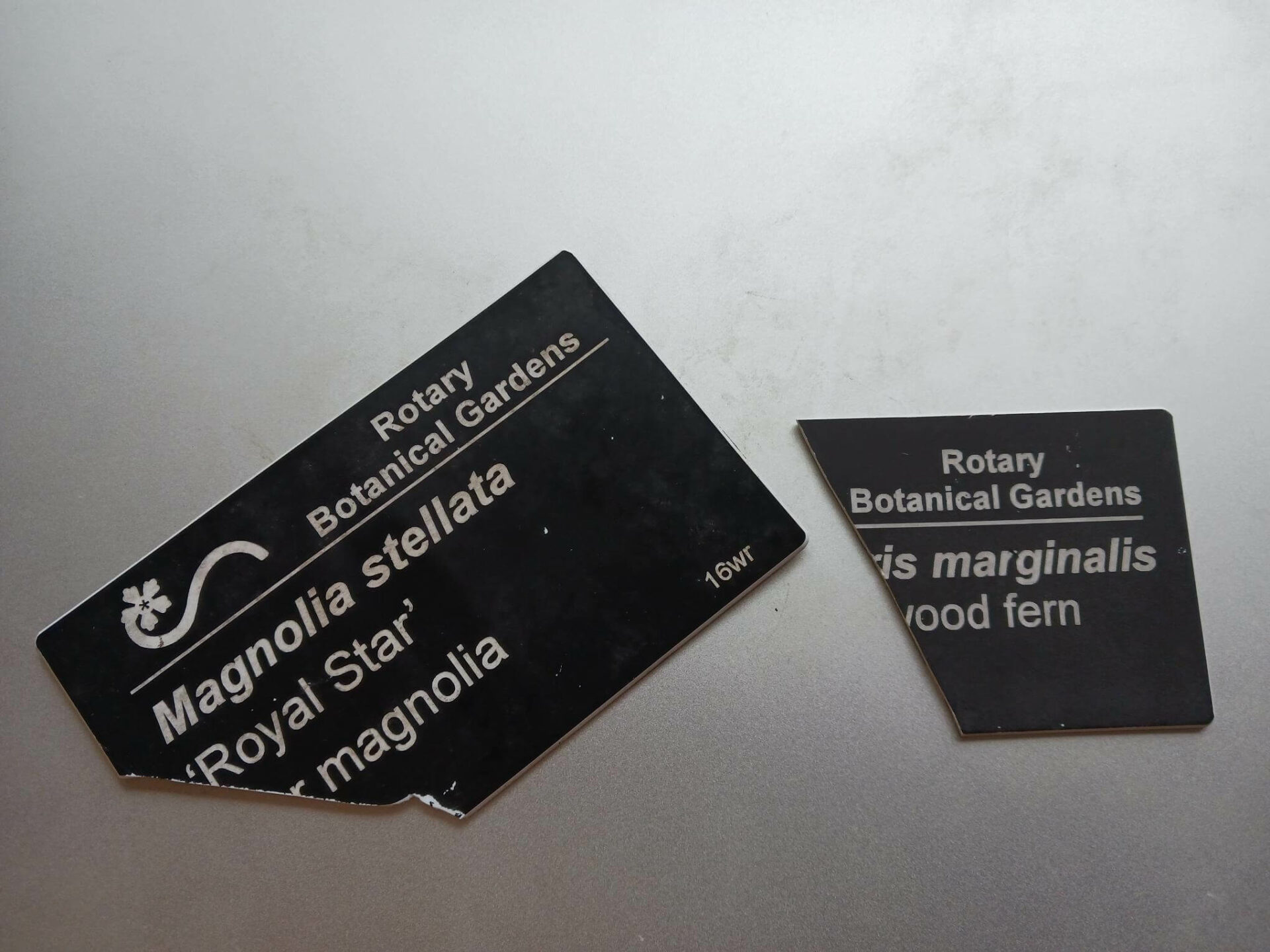
We were ready to throw in the towel, but one of our many dedicated volunteers, Bob, asked if he could troubleshoot it further. It was discovered that the program that we had been using no longer communicated with the engraver, but a simple Word program would. This was the game changer we had been looking for!
Knowing that we now had a fully functioning engraver led us to brainstorm other ways we could improve our entire plant collections management systems, and this begins with the label itself.
A walk through the garden reveals that many of our existing labels were cracked, chipped, or just plain missing from its stake. The plastic labels become brittle over time and are susceptible to breakage from human and wildlife traffic through the garden beds.
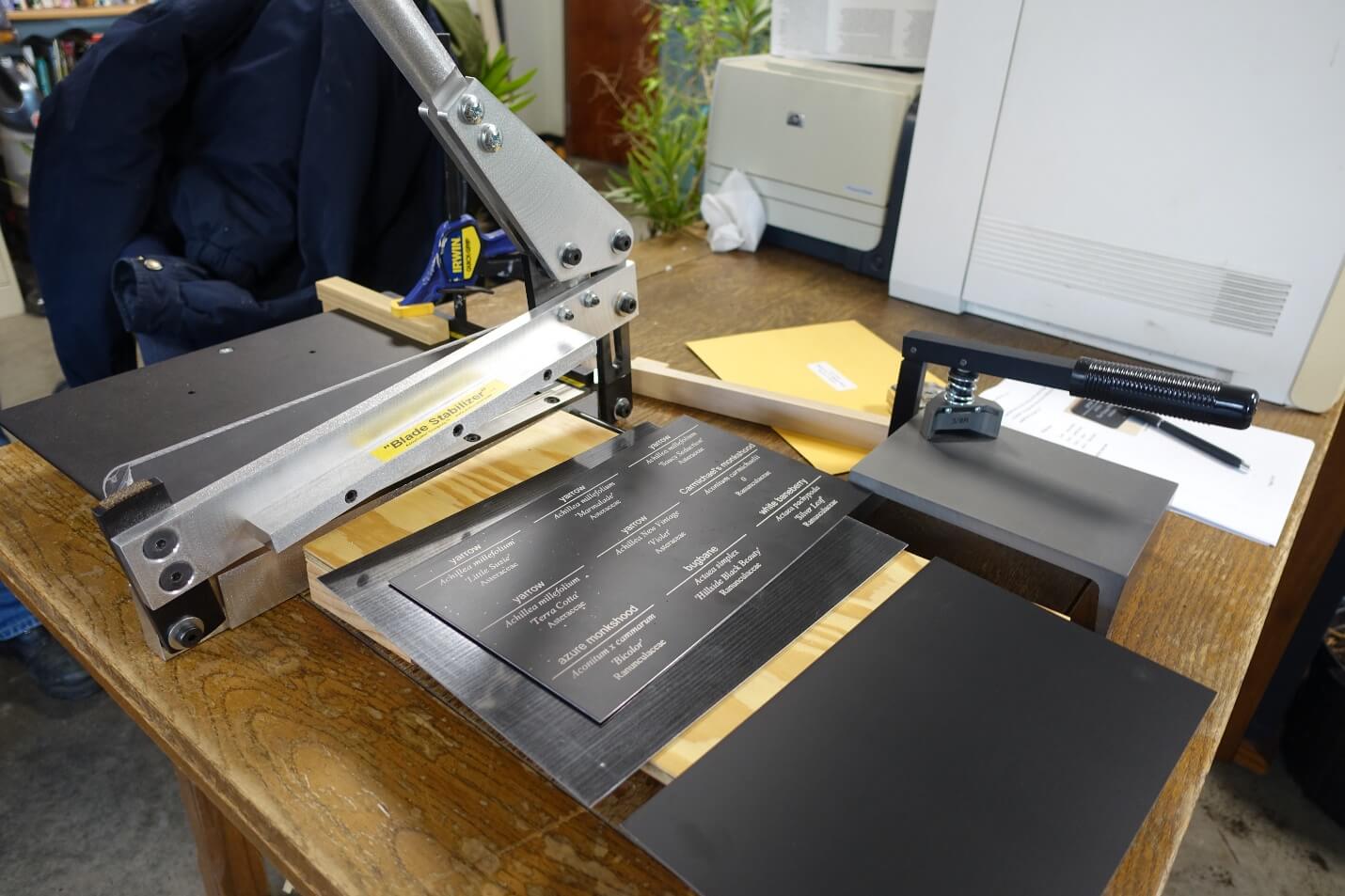
The labels were secured to the stake with an industrial strength adhesive, but the number of empty stakes without a label told us that we needed to find a better way. We decided to move on from a plastic label to an exterior rated anodized aluminum label, as the metal label would hold up to the elements.
Additionally, the labels will now be mounted on a stake with two small rivets that keep them in place, rather than relying on the adhesive. The rivets are black, so they will blend in with the face of the label as much as possible.
With thousands of labels to make, cost effectiveness was a big consideration. Rather than send out for precut labels at a premium price, we decided to purchase large sheets of anodized aluminum and cut them to size ourselves.
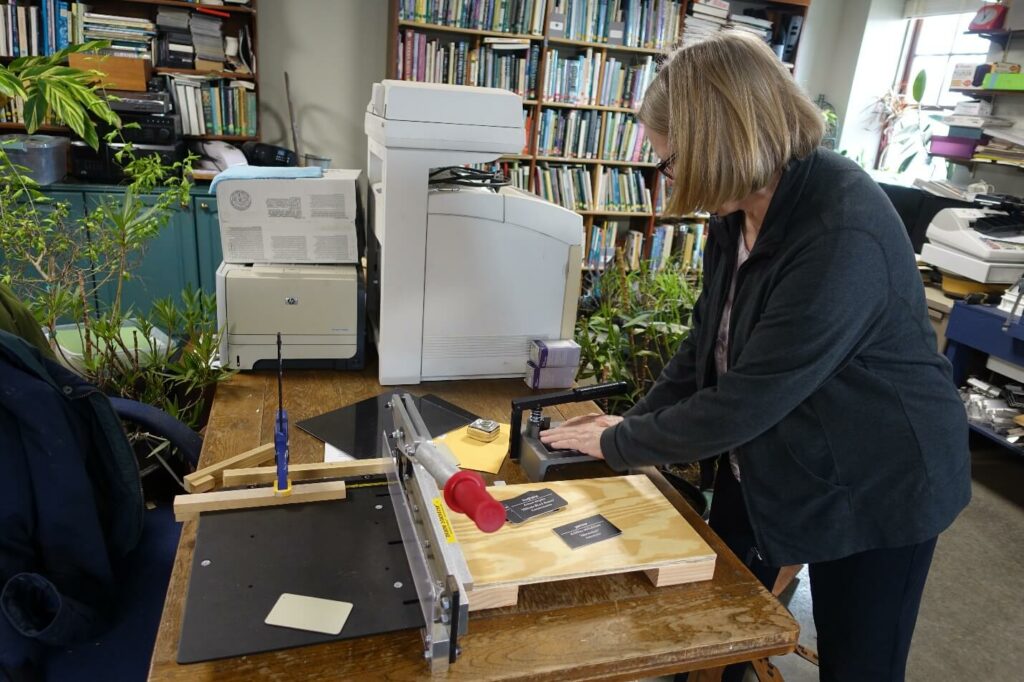
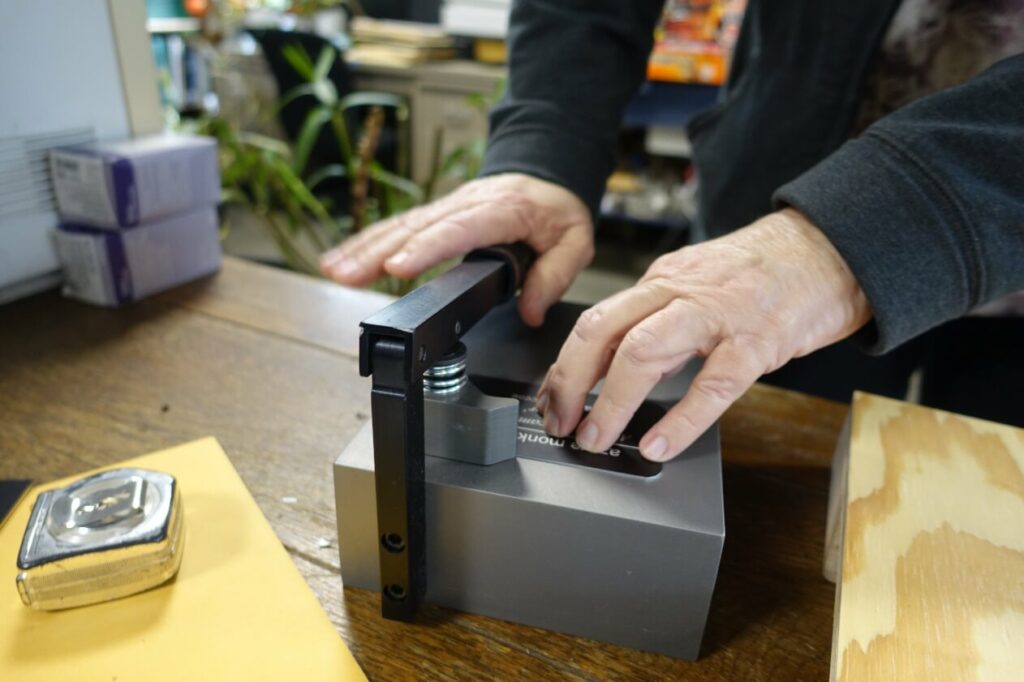
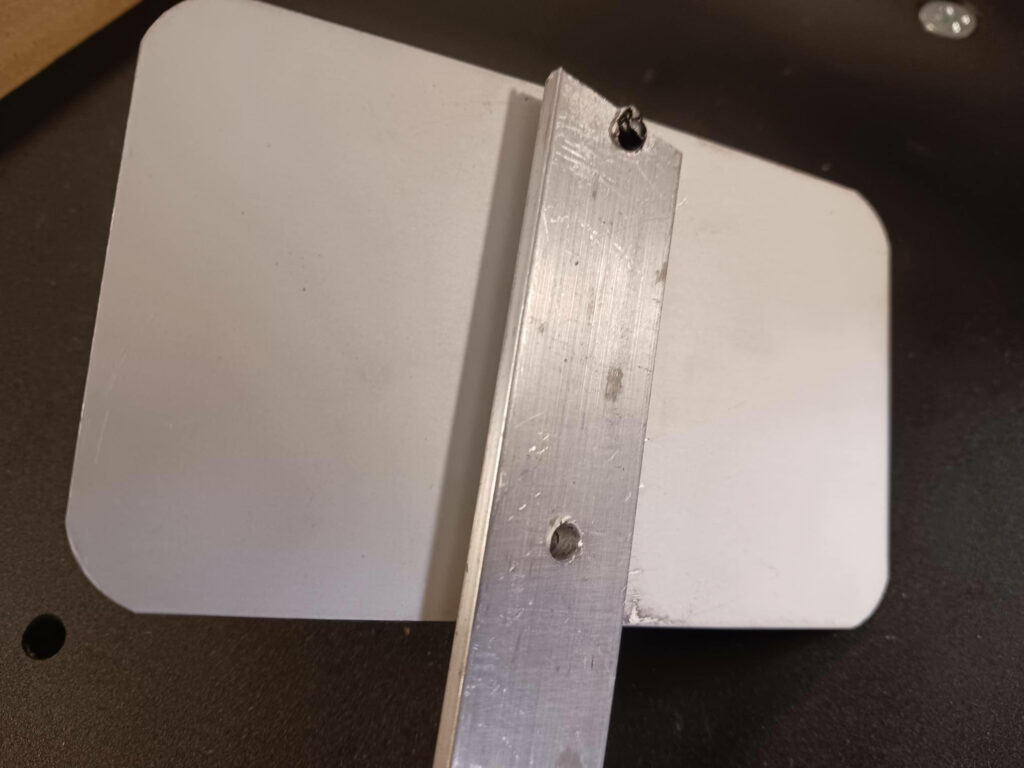
To do this we needed to buy a shear, a piece of equipment that looks like a large paper cutter but is used to cut through metal. We line up the metal sheets up against wooden stops, to ensure a perfect cut when cutting different dimensions of signs.
The next step is putting each label in the corner cutter, which will take the sharp edge off of each sign and give it a sleek look. After this, the pop rivets attach to the stake and the label is ready to be placed in the garden!


We are going through old invoices to develop a spreadsheet of all the plants ordered over the past couple of years that will need a label made for them. Once we are caught up on these, we will turn our attention to the existing labels in the garden and converting them over to the new label style.
We are making labels right now and will start to place them out in the garden as they are completed, so be on the lookout for them when you visit us this spring! After this first phase of relabeling our plant collection is completed, we will look to use a GPS program to digitally map the plants, benches, etc. and have this information available online.
